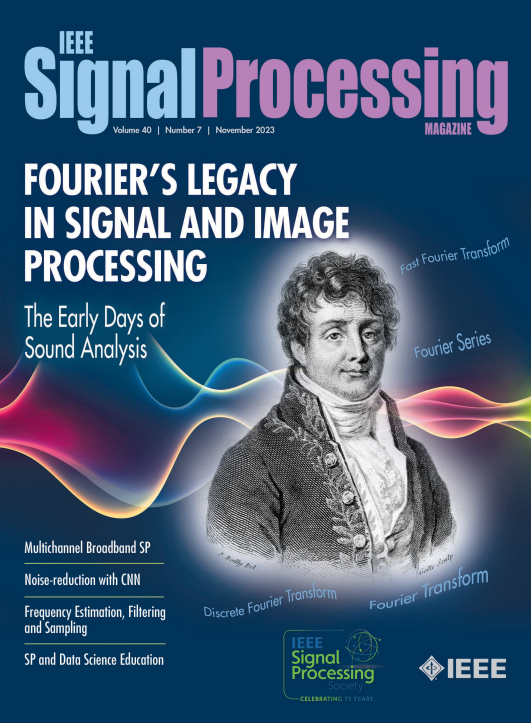Diffusion Models for Audio Restoration: A review [Special Issue On Model-Based and Data-Driven Audio Signal Processing]
IF 9.6
1区 工程技术
Q1 ENGINEERING, ELECTRICAL & ELECTRONIC
引用次数: 0
Abstract
With the development of audio playback devices and fast data transmission, the demand for high sound quality is rising for both entertainment and communications. In this quest for better sound quality, challenges emerge from distortions and interferences originating at the recording side or caused by an imperfect transmission pipeline. To address this problem, audio restoration methods aim to recover clean sound signals from the corrupted input data. We present here audio restoration algorithms based on diffusion models, with a focus on speech enhancement and music restoration tasks. Traditional approaches, often grounded in handcrafted rules and statistical heuristics, have shaped our understanding of audio signals. In the past decades, there has been a notable shift toward data-driven methods that exploit the modeling capabilities of deep neural networks (DNNs). Deep generative models, and among them diffusion models, have emerged as powerful techniques for learning complex data distributions. However, relying solely on DNN-based learning approaches carries the risk of reducing interpretability, particularly when employing end-to-end models. Nonetheless, data-driven approaches allow more flexibility in comparison to statistical model-based frameworks, whose performance depends on distributional and statistical assumptions that can be difficult to guarantee. Here, we aim to show that diffusion models can combine the best of both worlds and offer the opportunity to design audio restoration algorithms with a good degree of interpretability and a remarkable performance in terms of sound quality. In this article, we review the use of diffusion models for audio restoration. We explain the diffusion formalism and its application to the conditional generation of clean audio signals. We believe that diffusion models open an exciting field of research with the potential to spawn new audio restoration algorithms that are natural-sounding and remain robust in difficult acoustic situations.音频恢复的扩散模型:综述[基于模型和数据驱动的音频信号处理专刊]
随着音频播放设备的发展和数据传输的快速发展,娱乐和通信对高音质的需求越来越高。在追求更好的音质的过程中,来自录音端的失真和干扰或由不完善的传输管道引起的挑战出现了。为了解决这个问题,音频恢复方法旨在从损坏的输入数据中恢复干净的声音信号。我们在这里提出了基于扩散模型的音频恢复算法,重点是语音增强和音乐恢复任务。传统的方法,通常基于手工规则和统计启发式,塑造了我们对音频信号的理解。在过去的几十年里,利用深度神经网络(dnn)的建模能力的数据驱动方法发生了显著的转变。深度生成模型,以及其中的扩散模型,已经成为学习复杂数据分布的强大技术。然而,仅仅依赖基于dnn的学习方法有降低可解释性的风险,特别是在使用端到端模型时。尽管如此,与基于统计模型的框架相比,数据驱动的方法具有更大的灵活性,后者的性能依赖于难以保证的分布和统计假设。在这里,我们的目标是表明扩散模型可以结合两者的优点,并提供设计具有良好可解释性和音质方面卓越性能的音频恢复算法的机会。在本文中,我们回顾了扩散模型在音频恢复中的应用。我们解释了扩散形式及其在条件生成干净音频信号中的应用。我们相信,扩散模型打开了一个令人兴奋的研究领域,有可能产生新的音频恢复算法,这些算法听起来自然,并且在困难的声学情况下保持鲁棒性。
本文章由计算机程序翻译,如有差异,请以英文原文为准。
求助全文
约1分钟内获得全文
求助全文
来源期刊

IEEE Signal Processing Magazine
工程技术-工程:电子与电气
CiteScore
27.20
自引率
0.70%
发文量
123
审稿时长
6-12 weeks
期刊介绍:
EEE Signal Processing Magazine is a publication that focuses on signal processing research and applications. It publishes tutorial-style articles, columns, and forums that cover a wide range of topics related to signal processing. The magazine aims to provide the research, educational, and professional communities with the latest technical developments, issues, and events in the field. It serves as the main communication platform for the society, addressing important matters that concern all members.
 求助内容:
求助内容: 应助结果提醒方式:
应助结果提醒方式:


